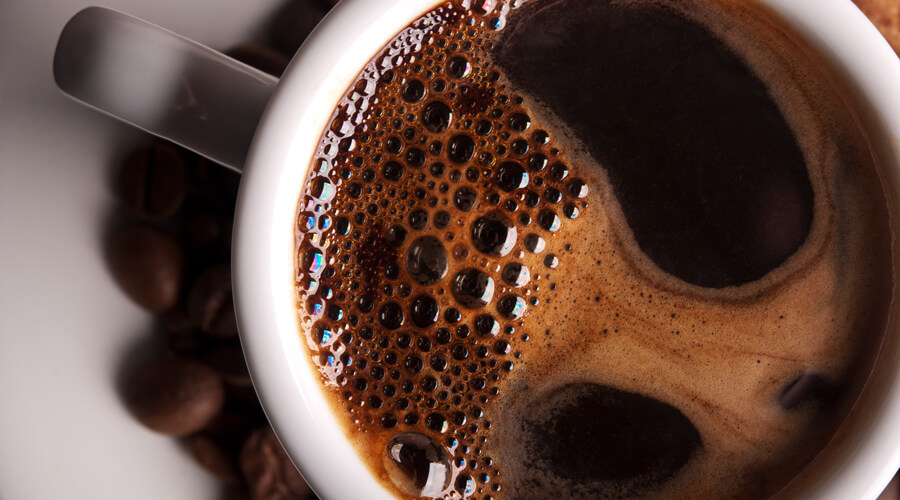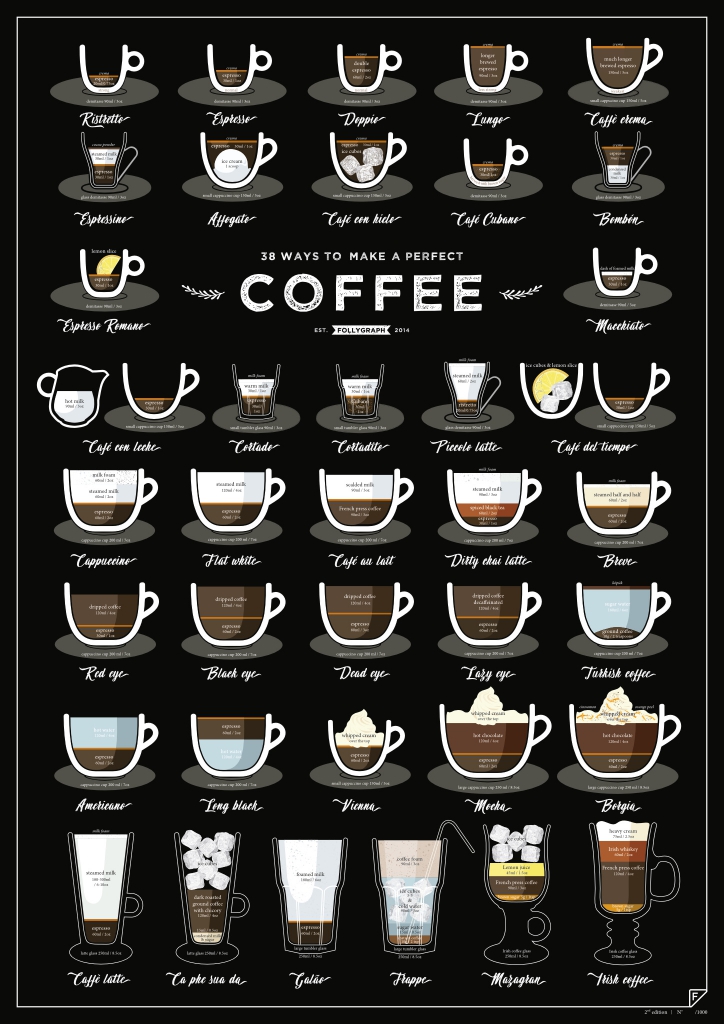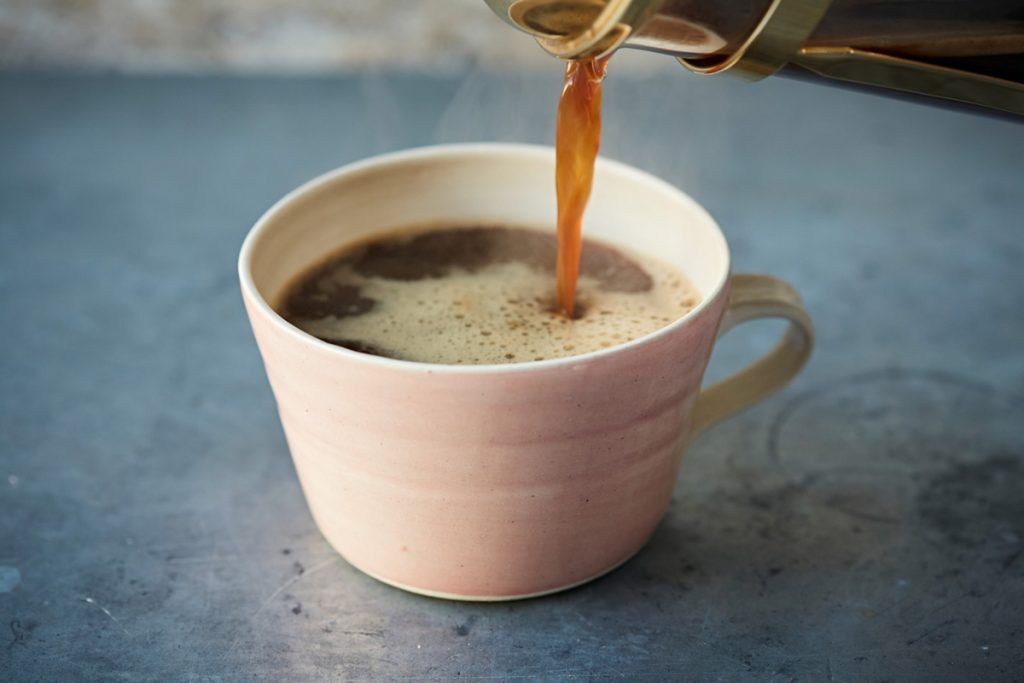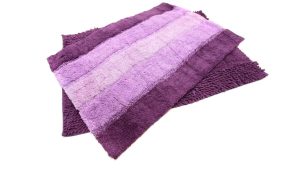The perfect cup of coffee combines high-quality beans, precise brewing, and fresh water. Consistency in these elements ensures a delightful experience.
Crafting the perfect cup of coffee starts with selecting premium beans. Choose beans that are freshly roasted and ground for the best flavor. Use clean, filtered water to avoid any unwanted tastes. The brewing method also plays a crucial role.
Whether you prefer a French press, drip, or espresso machine, maintaining the right water-to-coffee ratio is essential. Pay attention to the water temperature and brewing time for optimal results. With these factors in place, you can enjoy a rich, aromatic cup of coffee every time. Experiment with different beans and techniques to find your perfect brew.
The Quest For The Perfect Cup
Searching for the perfect cup of coffee is a lifelong journey. Coffee lovers and experts constantly seek that ideal brew. But what defines coffee perfection? And do individual preferences matter? Let’s dive into this quest.
Defining Coffee Perfection
Coffee perfection can mean different things to different people. It often depends on several factors:
- Bean Quality: High-quality beans are crucial.
- Brewing Method: The way you brew affects the taste.
- Water Quality: Pure water makes better coffee.
These factors contribute to what many consider the perfect cup. Coffee experts often agree on these standards.
Individual Preferences Vs. Universal Standards
Everyone has their own coffee preferences. Some like it strong and bold. Others prefer it smooth and mild. Can there be a universal standard?
| Preference | Characteristic |
|---|---|
| Strong Coffee | High caffeine content |
| Mild Coffee | Low acidity |
While there are universal standards for quality, taste is subjective. What one person loves, another might dislike. This makes the quest for the perfect cup both exciting and challenging.
The Bean’s Journey: Seed To Cup
Crafting the perfect cup of coffee starts with understanding the bean’s journey. From the seed to the final cup, each step matters. This process involves careful cultivation, harvesting, processing, and brewing. Let’s explore the key stages in detail.
Coffee Varietals And Their Impact
Coffee varietals refer to the different types of coffee plants. Each varietal has unique flavors and characteristics. Some popular coffee varietals include Arabica and Robusta. Arabica beans are known for their smooth and complex flavors. Robusta beans have a stronger, more bitter taste.
The region where the coffee grows also affects its taste. Coffee from Ethiopia may taste fruity. Coffee from Brazil might have a nutty flavor. The soil, climate, and altitude all play a role. These factors create distinct flavor profiles in the beans.
The Importance Of Bean Freshness
Freshness is crucial for a great cup of coffee. Beans start losing their flavor soon after roasting. It’s best to use beans within two weeks of roasting. Store them in an airtight container to keep them fresh.
They were grinding the beans just before brewing also matters. Pre-ground coffee loses flavor faster. Freshly ground beans release more aroma and taste. This enhances the overall coffee experience.
| Varietal | Flavor Profile |
|---|---|
| Arabica | Smooth, Complex |
| Robusta | Strong, Bitter |
| Ethiopian | Fruity |
| Brazilian | Nutty |
To summarize, the bean’s journey from seed to cup is fascinating. Each step influences the final taste. Understanding these elements helps in making the perfect cup of coffee.
Grinding For Greatness
Creating the perfect cup of coffee starts with grinding. Freshly ground beans unlock the flavor. The right grind ensures a balanced taste. Let’s explore how to achieve greatness in your coffee grind.
Choosing The Right Grinder
Two main types of grinders exist blade and burr. Blade grinders are cheaper. They use rotating blades to chop beans. This results in uneven grind sizes. Burr grinders are more expensive. They crush beans between two burrs. This results in consistent grind size.
| Grinder Type | Pros | Cons |
|---|---|---|
| Blade Grinder | Affordable, Easy to use | Inconsistent grind size, Heat generation |
| Burr Grinder | Consistent grind size, Better flavor | More expensive, Requires maintenance |
The Consistency Of Grind Size
Grind size affects the extraction process. Too fine, and the coffee is over-extracted. This makes it bitter. Too coarse, and the coffee is under-extracted. This makes it sour.
- Coarse Grind: Best for French press
- Medium Grind: Ideal for drip coffee
- Fine Grind: Perfect for espresso
Consistency in grind size ensures even extraction. It balances flavors. Invest in a good grinder. Enjoy a perfect cup every time.
Water: The Unsung Hero
Water plays a crucial role in brewing the perfect cup of coffee. Many focus on coffee beans or brewing methods, but water quality and temperature are equally important. Understanding water’s impact can elevate your coffee experience.
The Role Of Water Quality
The quality of water significantly affects the taste of your coffee. Use clean, filtered water to avoid impurities. Impurities can alter the flavor of your coffee. Water hardness also plays a key role. Hard water contains high levels of minerals like calcium and magnesium. These minerals can affect extraction and flavor. Soft water, on the other hand, lacks these minerals and can result in a flat taste.
| Water Type | Impact on Coffee |
|---|---|
| Hard Water | It enhances flavor but may lead to over-extraction |
| Soft Water | This may result in a flat and dull taste |
| Filtered Water | It provides a balanced and clean taste |
Optimal Water Temperature For Extraction
Water temperature is critical for proper extraction. The ideal temperature range is between 195°F and 205°F (90°C and 96°C). Too hot, and the coffee can taste burnt and bitter. Too cold, and it can taste weak and under-extracted. Use a thermometer to ensure accuracy. If you lack a thermometer, let boiling water sit for 30 seconds before using it.
- Too Hot (Above 205°F): Results in bitter and burnt coffee.
- Too Cold (Below 195°F): Leads to weak and under-extracted coffee.
- Ideal Range (195°F to 205°F): Balanced and flavorful extraction.
Using the right water and temperature ensures a perfect cup of coffee. Pay attention to these details for the best results.
Mastering The Brew Ratio
The secret to a perfect cup of coffee lies in the brew ratio. The brew ratio is the balance between coffee and water. It determines the strength and flavor of your coffee.
Finding The Right Balance
Getting the right balance is crucial for a great cup of coffee. A typical brew ratio is 1:16. This means one part coffee to 16 parts water.
Use a kitchen scale for accurate measurements. Weigh your coffee and water for the perfect ratio.
| Brew Ratio | Strength |
|---|---|
| 1:15 | Strong |
| 1:16 | Medium |
| 1:17 | Mild |
Adjusting Ratios For Taste
Everyone has different taste preferences. Adjust the ratio to suit your taste.
If you like a stronger coffee, use a 1:15 ratio. For a milder taste, try 1:17. Experiment to find what you like best.
Here are some tips for adjusting ratios:
- Start with a 1:16 ratio.
- Adjust by small amounts.
- Keep notes on what you like.
Mastering the brew ratio takes practice. But the reward is a perfect cup of coffee.
Brewing Techniques Unveiled
Exploring the world of coffee can be exciting. Understanding different brewing techniques is key. Each method brings out unique flavors. Let’s dive into some popular techniques.
Pour Over Vs. Immersion Methods
Pour Over and Immersion methods create different coffee experiences. During a pour-over, hot water is poured over coffee grounds. The water flows through a filter into the cup. This method highlights subtle flavors.
Immersion methods, like the French Press, steep coffee grounds in hot water. After a few minutes, you press the plunger to separate the grounds. Immersion methods often result in a richer taste.
| Pour Over | Immersion |
|---|---|
| Light and clean | Rich and full-bodied |
| Highlights delicate notes | Emphasizes bold flavors |
| More control over brewing | Less control over brewing |
Espresso Vs. Filter Coffee
Espresso is a concentrated coffee brewed by forcing hot water through fine grounds. It has a strong, bold flavor and a creamy texture.
Filter Coffee, on the other hand, involves pouring hot water through coffee grounds held in a filter. The water then drips into a pot or cup. This method produces a cleaner and lighter brew.
- Espresso: Intense flavor, creamy texture.
- Filter Coffee: Light, clean, and smooth.
Each method has its unique charm. Your preference will guide your choice. Whether you enjoy a strong espresso shot or a gentle pour-over, experimenting is key to finding your perfect cup.
The Impact Of Time And Temperature
Brewing the perfect cup of coffee is an art. Two key factors play a crucial role: time and temperature. These elements can make or break your coffee experience. Understanding the effects of these factors helps you achieve a consistently great brew.
Extraction Time Fine-tuning
The extraction time determines the coffee’s flavor. Short extraction times result in under-extracted coffee. This coffee tastes sour and lacks depth. Long extraction times lead to over-extraction. This coffee tastes bitter and harsh.
A balanced extraction time is essential. Here’s a simple guide:
| Time | Result |
|---|---|
| Under 20 seconds | Sour and weak coffee |
| 20-30 seconds | Balanced and flavorful coffee |
| Over 30 seconds | Bitter and over-extracted coffee |
Temperature Control For Consistency
Temperature control is vital for consistent coffee. The ideal temperature range is between 195°F and 205°F (90°C to 96°C). Too low a temperature results in under-extraction. This causes a sour and weak flavor. Too high a temperature causes over-extraction. This results in bitterness.
Using a digital thermometer can help. Here are some tips:
- Heat water to the correct temperature.
- Use a kettle with temperature control.
- Pre-warm your brewing equipment.
Serving And Savoring
The journey to the perfect cup of coffee doesn’t end with brewing. Serving and savoring coffee is an art that enhances the experience. From presentation to mindful tasting, each step adds to the pleasure.
The Art Of Coffee Presentation
Presentation matters when serving coffee. A well-presented cup can elevate the experience.
- Use clean and stylish cups.
- Consider the size and shape of the cup.
- Serve with a saucer and spoon.
- Include a small side treat, like a biscuit.
Pay attention to details. A little effort goes a long way. A beautifully presented coffee can make your morning brighter.
Mindful Tasting And Enjoyment
Savoring coffee is a mindful activity. It’s more than just drinking.
- Take a moment to smell the aroma.
- Notice the steam rising from the cup.
- Take a small sip and let it linger.
- Identify the different flavors and notes.
Engage all your senses. This makes the coffee experience richer and more enjoyable.
To fully enjoy your coffee, minimize distractions. Focus on the taste and aroma. This turns a simple cup into a delightful ritual.
Advanced Tips And Tricks
Creating the perfect cup of coffee is an art form. Advanced tips and tricks can elevate your brewing game. Let’s explore some expert techniques to enhance your coffee experience.
Experimenting With Water-to-coffee Ratios
Finding the ideal water-to-coffee ratio is key. This ratio affects the strength and flavor of your brew. Most people use a standard ratio of 1:16, which means one part coffee to 16 parts water.
Experiment with different ratios to suit your taste. Here are some suggestions:
| Ratio | Strength | Flavor Profile |
|---|---|---|
| 1:15 | Strong | Bold and Intense |
| 1:16 | Medium | Balanced |
| 1:17 | Mild | Light and Smooth |
Tweaking Brew Times For Different Flavors
The brew time greatly influences the coffee’s taste. Adjusting this time can bring out various flavors and aromas. A shorter brew time often results in a lighter, more delicate cup.
Conversely, a longer brew time can create a stronger, more robust flavor. Here are some tips:
- For a light brew, aim for 2-3 minutes.
- For a medium brew, aim for 3-4 minutes.
- For a strong brew, aim for 4-5 minutes.
Pay attention to the grind size as well. A finer grind usually requires a shorter brew time. A coarser grind needs more time to extract flavors properly.
Maintaining Your Coffee Gear
Maintaining your coffee gear is crucial for a perfect cup of coffee. Proper care ensures your equipment lasts longer. It also keeps your coffee tasting fresh and delicious. Let’s dive into the essentials of cleaning and upgrading your coffee gear.
Cleaning And Care For Longevity
Regular cleaning keeps your coffee gear in top shape. Coffee oils and residues can build up over time. These can affect the taste of your coffee. Follow these simple steps to keep your gear clean:
- Rinse your coffee maker parts after each use.
- Use a soft brush to scrub away coffee grounds.
- Describe your coffee machine monthly with a vinegar solution.
- Wipe down your grinder to remove coffee dust.
- Use a mild detergent for deeper cleaning.
Proper care helps your equipment last longer and keeps your coffee tasting great.
When To Replace Or Upgrade Equipment
Even with good care, coffee gear doesn’t last forever. Here are signs it’s time to replace or upgrade:
| Equipment | Signs to Replace |
|---|---|
| Coffee Maker | Leaking, slow brewing, inconsistent temperature |
| Grinder | Dull blades, inconsistent grind size, unusual noise |
| Filters | Torn, discolored, or foul smell |
Newer equipment can offer better features and improved performance. Consider upgrading for a better coffee experience.
Maintaining your coffee gear ensures the best taste and longevity. Happy brewing!
Frequently Asked Questions
What Makes A Perfect Cup Of Coffee?
A perfect cup of coffee starts with fresh, high-quality beans. Grind them just before brewing. Use filtered water at the right temperature, around 195-205°F. Maintain the correct coffee-to-water ratio, typically 1:15. Brew for the right amount of time, usually 4-5 minutes.
Enjoy immediately for the best flavor.
What Determines The Quality Of A Cup Of Coffee?
The quality of a cup of coffee depends on bean origin, roast level, grind size, brewing method, and water quality. Freshness also plays a crucial role.
What Is The Secret To A Good Cup Of Coffee?
A good cup of coffee starts with fresh, high-quality beans. Grind them just before brewing. Use filtered water and maintain proper coffee-to-water ratio. Ensure your equipment is clean. Experiment with brewing methods to find your perfect taste. Enjoy immediately after brewing for the best flavor.
How Do You Make The Most Perfect Coffee?
Use fresh beans, and grind just before brewing. Use filtered water at 195-205°F. Measure coffee and water precisely. Brew for 4 minutes. Enjoy immediately.
What Is The Best Coffee Grind Size?
A medium grind is ideal for drip coffee makers. It provides a balanced flavor extraction.
How Much Coffee Should I Use?
Use 1 to 2 tablespoons of coffee per 6 ounces of water. Adjust to taste.
What Water Temperature Is Ideal?
195°F to 205°F is the perfect range. It ensures optimal extraction.
Should I Use Filtered Water?
Yes, filtered water improves taste by removing impurities. It enhances the overall flavor.
Conclusion
Achieving the perfect cup of coffee involves quality beans, precise measurements, and the right brewing method. Experiment with different techniques and flavors to find your ideal brew. Remember, the best coffee is the one that delights your taste buds. Enjoy the process and savor every sip!








